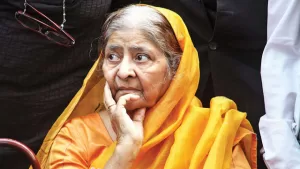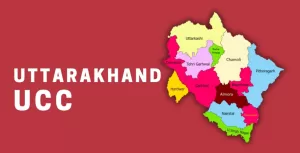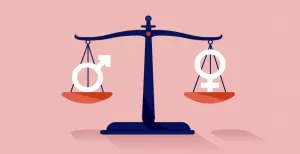Press Release, 9 December 2020
The Right to Food Campaign is shocked with the worsening situation of hunger, although it is more than five months since the lockdown has ended. This emerged in the presentation of the Hunger Watch study carried out by Right to Food Campaign and Center for Equity Studies in 11 states, Chhattisgarh, Delhi, Gujarat, Jharkhand, Madhya Pradesh, Maharashtra, Rajasthan, Tamil Nadu, Telangana, Uttar Pradesh, West Bengal. Today, the Right to Food Campaign held a press conference to share the findings of a national survey on situation of hunger and malnutrition. Vulnerable communities in rural and urban areas were identified by local activists/researchers who then shortlisted the households to be surveyed within these communities based on group discussions with the community. A simple questionnaire was developed and administered using smart phones. This is one of the few in-person surveys that have been conducted since the pandemic. While the data being presented may not be representative of the district, state or country, they tell a story of deprivation of thousands of households in similar situations.
The preliminary results from the Hunger Watch, show that the situation of hunger is quite serious, even five months after the lockdown has ended. A large number of households report lower levels of income (62%), reduced intake of cereals (53%), pulses (64%), vegetables (73%) and eggs/non-vegetarian items (71%), worsened nutritional quality (71%) and an increased need to borrow money to buy food (45%). Government support in the form of free rations, and alternatives to school and anganwadi meals in the form of dry rations and/or cash transfers reached more than half the people (PDS having relatively better outreach). While this support from the government programmes has been crucial, the staggering levels of hunger witnessed during the Hunger Watch also showed the inadequacy of these schemes. Many are left out and even among those who did get the entitlements, the overall consumption was still lower than what it was before the lockdown. This calls for strengthening and expansion of these schemes.
The main findings from the survey are presented below. The figures presented here are not weighted by the sample size or population of the states but are simple averages.
Highlights from Hunger Watch Study
Profile of Respondents
- 3994 respondents from 11 states (Uttar Pradesh, Madhya Pradesh, Gujarat, Rajasthan, Maharashtra, Chhattisgarh, Jharkhand, Delhi, Telangana, Tamil Nadu and West Bengal). 2186 in rural areas and 1808 in urban areas
- 79% of the respondents had income less than Rs 7,000 per month before the lockdown. 41% of them earned less than Rs 3,000 per month before the lockdown.
- Roughly 59% of the respondents were Dalits/Adivasis, 23% were OBC and about 4% were PVTG. About 64% identified themselves as Hindus while 20% were Muslims.
- 55% of the respondents were women.
- 48% were slum dwellers, 14% were single women headed households and 7% of the respondents had households with a member who was disabled.
- About 45% were daily wage labourers and 18% were farmers.
Change in Consumption Patterns in September-October compared to before lockdown
Compared to pre-lockdown, incomes in September/October still remain affected
- About 43% of them had no income in April-May. Out of these people, only about 3% have gone back to income levels of what it was before lockdown while 56% of them continue to have no income in the last 30 days.
- Roughly 62% of the respondents said that their income reduced in September-October compared to pre-lockdown .
- For about one in four respondents, the income in the last 30 days is half of what it was during pre-lockdown.
In summary, what we see is that for a large majority of people, there is no change in their economic status from what it was in April-May.
Consumption of cereals, pulses and vegetables “decreased a lot” in September/October compared to pre-lockdown
- 53% reported that their consumption of rice/wheat has decreased in September-October and for about one in four it’s “decreased a lot.”
- 64% reported that their consumption of dal has decreased in September-October of which about 28% reported that it’s “decreased a lot.”
- 73% reported that their consumption of green vegetables has decreased in September-October and for about 38% it’s “decreased a lot.”
Reduction on Consumption of Eggs/Non-veg items staggering
- About 17% of our respondents said that they consumed eggs/nonveg ‘often’ before the lockdown. Among them, 91% said that their eggs/meat consumption has decreased in September-October and a staggering 58% said that it has “decreased a lot.” About 46% of the respondents said that they consumed eggs/meat ‘sometimes’ before the lockdown and among them, 76% reported that their egg/meat consumption has decreased .
Large proportion skip meals and go to bed hungry
- About 56% of the respondents never had to skip meals before lockdown. Of them, one in seven had to either skip meals ‘often’, ‘sometimes’ in the last 30 days.
- In September-October, about 27% respondents sometimes went to bed without eating. About one in 20 households often went to bed without eating.
Overall decline in nutritional quality and quantity, even the relatively better off affected badly
- About 71% reported that the nutritional quality of food has worsened in September-October from what it was before lockdown of which about 40% said it’s become “much worse.” While lower income groups were affected more, 62% of those who earned more than Rs 15,000 per month before lockdown reported that their nutritional quality worsened in September-October compared to before lockdown.
- Two-thirds reported that the quantity of food has either decreased somewhat or decreased a lot now compared to before lockdown. 28% reported decreased a lot.
Need to borrow money for food has increased for all
- For about 45%, the need to borrow money for food has increased from pre-lockdown periods. Even among those in the highest income bracket (> Rs 15,000 per month pre-lockdown), about 42% reported that their need to borrow money has increased. This again points to the fact that the need to borrow money for food was high regardless of the income levels of the household. Moreover, the need to borrow money among Dalits was 23 percentage points more than those in the ‘General’ category.
Discrimination Faced
- While one in four Dalits and Muslims report they faced discrimination in accessing food since lockdown, about 12% of Adivasis faced discrimination. This was one in ten among those in the ‘General’ category.
- About 77% of the PVTG families reported to have reduced the quantity of food consumption in September-October compared to before lockdown. Quantity of food consumption decreased for about 74% of the Dalits and for about 36% it ‘decreased a lot’. About 54% of the Adivasis reported that their quantity of food consumption decreased. About 7% reported that their quantity of food consumption increased in the last 30 days. About 69%% of the OBCs said that their consumption either decreased somewhat or decreased a lot and just 3% said that their quantity of food consumption increased in September-October. For about 68% of those in the general category, the quantity either ‘decreased somewhat’ or ‘decreased a lot’ and only about 3% reported that their consumption increased.
Access to Entitlements
- 70% have some kind of ration cards that gives them subsidised grains ((priority, AAY, state ration cards etc, including 2% who had temporary cards/coupons)
- 86% of those who had any ration card that is eligible for subsidised grains, said they received their usual entitlement of foodgrains from April to August
- 88% of those who had NFSA ration cards (1715 households) said that they did receive the free grains that were given under PMGKAY from April to August
- 57% households with school going children (2531 households) said their children received mid-day meals or alternative (dry rations/cash) in September-October
- 48% households with young children/pregnant lactating women (2125 households) said they received supplementary or alternative (dry rations/cash) from anganwadis in the last 30 days
Observations from Volunteers Who Carried Out the Survey
In addition to these highlights, volunteers who had carried out the surveys in the states also shared some key observations. From Gujarat, the issue of cancellation of ration cards and irregular supply of grains under the Mid Day Meal Scheme was observed by surveyors. From Jharkhand, the campaign shared that the state has seen starvation deaths due to the worsening economic condition and inability to afford even basic foodgrains. The High Court has taken suo motu cognisance of the issue after it was reported that three members of a family from Bokaro district succumbed to hunder and starvation in a span of six months. From Maharashtra, volunteers shared that the nutrition intake had suffered tremendously and the condition of the urban poor was especially concerning as in many cases domestic workers reported that they had not even received wages since the lockdown.
In Uttar Pradesh, the condition of vulnerable communities like Musahari has become especially precarious. Volunteers who carried out the survey shared that they found the community collecting chicken feathers for consumption in order to survive. From West Bengal, the problems faced by people in obtaining ration cards was shared due to the difficulties in furnishing necessary documents. From Chhattisgarh it was highlighted that the return of migrant labourers resulted in exacerbation of the situation of hunger as the labourers were not enrolled under food security schemes in their home state or where they worked. From Delhi, volunteers shared that the state of the poor and marginalised living on rent in slum settlements and the homeless is especially vulnerable as they are not covered under the PDS due to not possessing necessary documents like address proof, electricity bill required to apply for a ration card- only 37% of the population in Delhi gets grains under PDS.
Campaign’s Views On the Farm Laws and Labour Codes
At the press conference, the campaign expressed its solidarity with the farmers’ organisations across the country that have been protesting against the three farm laws that were passed in Parliament in an undemocratic manner, without proper discussion. These laws will have serious implications on the well-being of farmers as well as food security, hunger and malnutrition. The provisions of the National Food Security Act 2013 (NFSA 2013) that aims to ensure food security for all, has been completely ignored by the government while presenting these three bills in the Parliament. Schedule 3 of the NFSA 2013 states that the government should make provisions for advancing food security through measures that protect rights of small and marginalized farmers by bringing in land reforms, developing minor and small irrigation systems, providing remunerative prices, power and crop insurance. The NFSA also includes provisions for procurement, storage and movement related interventions that will help in promoting decentralised procurement. These three farm laws provide a completely different vision where the state’s role in procurement will reduce and the market is opened up for corporate interests without any protective regulation. Weakening the MSP and procurement mechanism could have serious implications for the PDS, pushing it towards cash transfers.
Speakers also highlighted the concerns of the campaign on the labour codes. The four labour codes disempower the informal sector workers and make their access to wage employment even more precarious thereby affecting their ability to buy food. Although half the people in India work in agriculture, most are net-buyers of food. Wages from employment is an important source of livelihood, and household food security depends on this greatly. The new labour codes make the employment conditions in the informal sector even more precarious, weakening minimum wage legislation. Further, social security code mostly addresses those in the formal sector and the power of collective bargaining is also weakened through these codes. All of this could result in even fewer people having secure and decent employment, thereby affecting food security adversely.
Demands
While this is the situation on the ground, some of the policy and legislative developments in the last few months are such that they could make the situation much worse such as the labour codes and the farm laws. During this crisis, as the Hunger Watch also shows, the PDS has been one of the few safety mechanisms that has worked for those are included in its net. Many also expressed the added vulnerability faced by them, especially in ensuring nutritious meals for children, in the absence of the school and anganwadi meals. The need therefore is to ensure universal access as well as expanded entitlements during this period of crisis. In this context, we make the following recommendations/ we demand the following:
- A universal public distribution system that provides every individual with 10 kg grain, 1.5 kg pulses and 800 gm cooking oil for at least the next six months (up to June 2021).
- Nutritious hot cooked meals, including eggs, through anganwadi centres and school midday meals to be distributed while following all safety guidelines related to distancing, sanitisation etc.
- Revival of all services of ICDS, including growth monitoring, additional supplementary nutrition for severely malnourished and nutrition counselling
- Maternity entitlements under the Pradhan Mantri Matritva Vandana Yojana without any restrictions on number of births or conditionalities to be met
- Enhanced social security pensions of at least ₹2000 per month for old people, single women and disabled persons.
- Repeal of the Farm Acts and steps to guarantee MSPs not just for rice and wheat but also pulses, oilseeds and millets.
- Strengthening of the FCI and setting up systems for decentralised procurement of a wide variety of food crops while linking these to food distribution schemes such as PDS, mid-day meals and ICDS.
- The Food Corporation of India (FCI) was created to save Indians from hunger. Despite the additional grains being provided as part of covid relief, the additional budgetary provision for FCI in the supplementary budget is only Rs.10000 crores. This continuous underfunding of the FCI weakens it and has been pushing it into huge debt. Government of India should provide adequate budget to strengthen the system of FCI.
[Amrita Johri, Anuradha Talwar, Aysha, Dipa Sinha, Gangaram Paikra, Kavita Srivastava, Mukta Srivastava and Sachin Jain (On behalf of Right to Food Campaign)]




